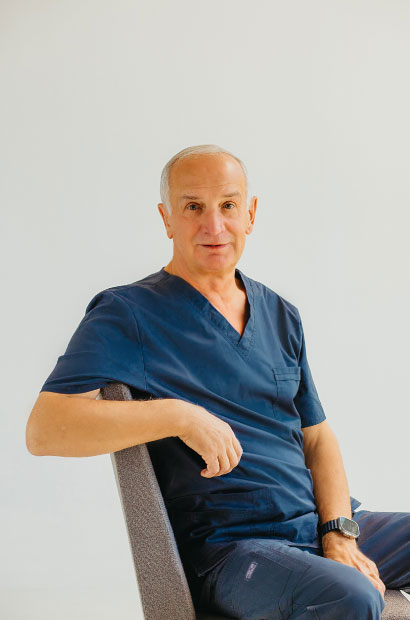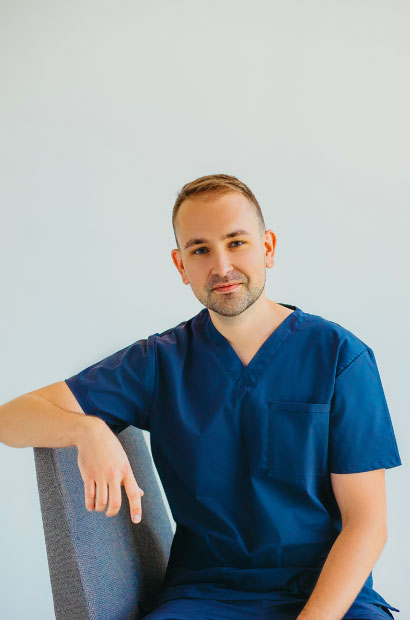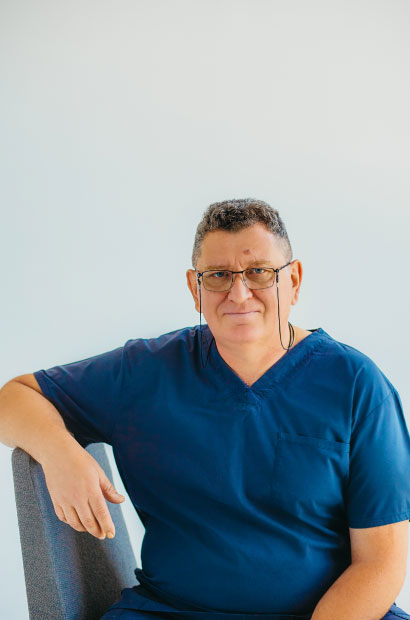Indications for abdominoplasty
- Sagging of the abdominal tissue due to weight loss, age-related changes, pregnancy.
- Diastasis (separation, stretching) of the rectus abdominis muscles, which can lead to the descent of the internal organs and hernia;
- Non-aesthetic skin stretch marks (striae), postoperative cicatrixes on the abdomen.
General contraindications: cancer, cardiovascular and acute infectious diseases, chronic hypertensive disease, thyroid disorders, diabetes mellitus, blood-clotting disorder, pregnancy, obesity.
Types of abdominoplasty
Classical (standard) abdominoplasty is performed according to the following scheme:
- A horizontal incision and/or a vertical incision is made on the anterior abdominal wall.
- Excess tissues along with stretch marks and cicatrixes are removed below the navel.
- Separated abdominal muscles are tightened.
- The navel is displaced, if necessary.
- At the end the stitches are put, drainage tubes are placed, and a bandage is put on.
Endoscopic abdominoplasty is recommended for young patients with a divergence of muscles but without excess fat and skin in the abdomen region. A special device (endoscope) is introduced in the navel area, several punctures are made in the pubiс zone.
Mini-abdominoplasty is performed to patients with minor skin and fat deposits and deformation of the anterior abdominal wall. The incision is made in the bikini zone (pubic zone), the navel remains in its place.
Extended (full) abdominoplasty is indicated in case of sizeable fat deposits, a large number of excess skin folds, which are located not only on the abdomen but on the thighs and back as well. Incisions are made in these areas of deformity. Such surgery requires the navel displacement.
How is the surgery performed in “Certus” clinic?
Pre-surgery examination: 1 hour.
Duration of the surgery: 2-4 hours (depending on the complexity of the surgery). The patient stays in a clinical setting for 1-5 days.
Anaesthesis: general anesthesia or local anesthesia with sedating medications.
Incision options: in the lower abdomen, in the pubic region, around the displaced navel.
*Recovery period. After the surgery, the patient wears special compression garments (a special elastic belt) for 4-6 weeks. The sutures are removed in 7-14 days. The swells, bruises and other side effects disappear in 1-2 months. The primary result is estimated in 2-4 months after the surgery.
*Side effects: temporary bruises, swellings, mild soreness, ailment, pain on movement, sensory decrement.
*Risks: infectious complications, hematomas, the sustainable healing process, serous fluid collection, roughness, asymmetry in the abdomen region. The possibility of complications is directly related to the fatty tissue thickness and the patient’s weight.
*Result: long-term in case of the absence of weight fluctuations, hormonal changes, pregnancy.
*The effect, result, risks, and recovery period depend on the individual peculiarities of the human body.




































































Add review